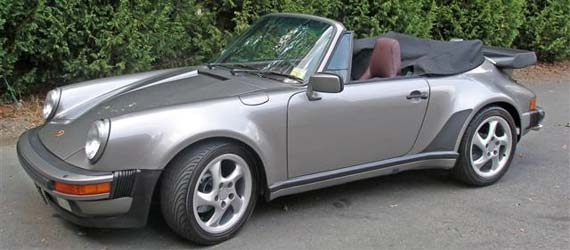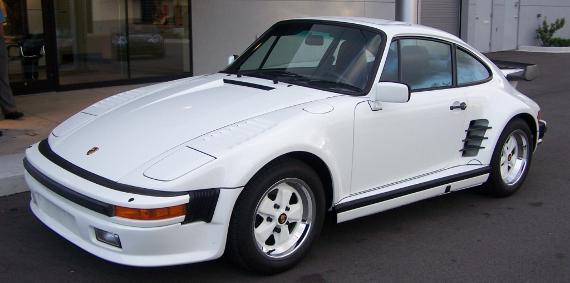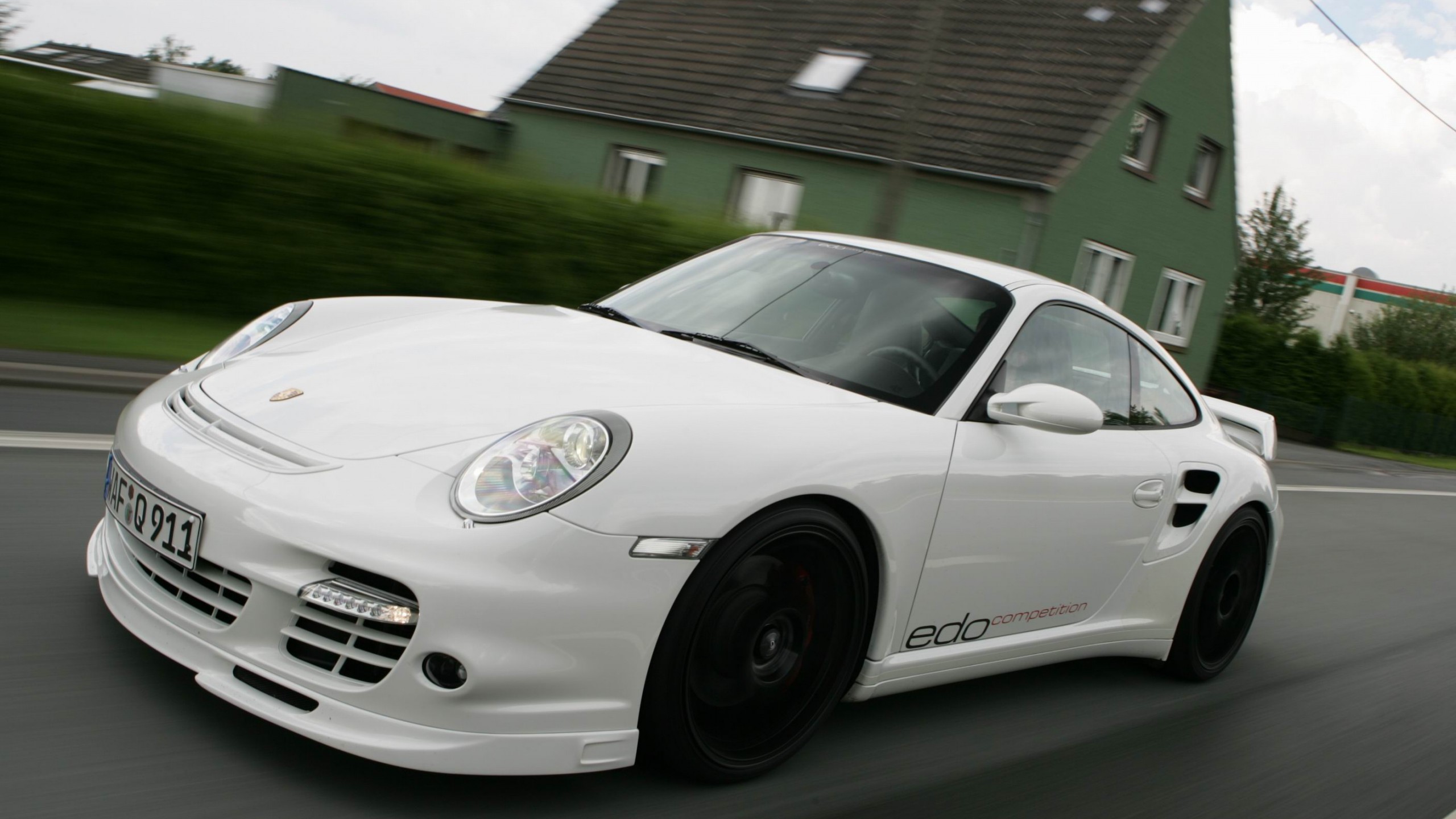Introducing the Ultimate Porsche 911 Turbo Buyer’s Guide
Don’t get me wrong. The naturally-aspirated Porsche 911 is one cool ride. In fact, my buddy Tyler and I used to make U-turns just to do double takes on any Porsche 911 we passed. But it was always with the same intention—to see if the car carried the famed “Turbo” badge across it’s backside—a symbol even we knew meant serious business.
There’s just something about a 911 Turbo, new or old, that strikes a chord with sport’s car enthusiasts everywhere. The 911 nameplate is the second-oldest sports car nameplate in production (behind the Corvette), but it was the Turbo 911 that happened to be the fastest accelerating car on the planet when it charged on to the scene with 260Hp back in 1975. By 1978, the Turbo 911’s power had reached a neck-snapping 300-hp. Today, a new Turbo 911 will set you back at least 130k and take you to speeds that would end your driving career. The feeling is still the same. Any Porsche 911 bearing a Turbo badge equals respect.
That’s why Blown Vs Turbo is bringing you this guide to purchasing a 911 Turbo.
Porsche 911 3.0L (Turbo) 1975-1978

Ex-Steve McQueen 1976 Porsche 930 Turbo
The Classic 911 Turbo, marketed as the Porsche 930 here in the States, was built from 1975-1989. The car symbolizes everything Porsche is known for: distinctive body shape, wide wheel arches, large rear spoiler and legendary Porsche power.
How to Spot
- Wide wheel arches front and rear
- Whailtail rear spoiler with additional cooling vent
- Vinyl ‘shark’s fin’ protectors on leading edges of rear arches
- ‘Turbo’ Badge on rear
Things to Know
The 911 Turbo was available from with the Martini stripes as featured on Porsche racecars of the day. The so-called Martini Turbo was not a model in its own right. The stripes were simply an option.
In the USA, the very first 911 Turbos were badged ‘Turbo Carrera’. These first cars are still commonly known by their factory model number – ‘930’.
The Driving Experience
Driving an early 911 Turbo, although an experience in itself, might not be quite as exciting as you’ve built it up to be in your mind. As is the case with most 1980s turbo cars, the interior is dated, the engine feels sluggish at low revs and the steering feels flat out heavy. And did I mention turbo lag?
The joke goes your clothes could go out of style waiting for the single KKK turbocharger on the 911 Turbo to kick in—but when it does you’re in for a wicked ride.
The situation doesn’t improve much when it comes to handling as the car’s turbocharged engine sits even further back behind the wheels than a normally aspirated 911. Take a corner too fast and you’ll find yourself in a spin before you know what hit you. Even the brakes are a bit underwhelming for a car of this power.
The good news is you’re in a 911 Turbo—a car whose image is just as, if not more famous than its performance. So sit back and enjoy the look on people’s faces as they eye down those massive wheel arches and whaletail, straining to see that oh-so-important Turbo badge.

Porsche 911 3.3L (Turbo) 1978-1983

1983 Porsche 911 Turbo
In 1978, Porsche decided it was time to fix the mistakes it had made on the original 911 Turbo. To start, they dropped in a bigger 3.3L engine, achieved through an increased bore and stroke. Compression jumped up to 7.0:1, larger main and big-end bearings were used and an intercooler was added. The intercooler in conjunction with the engine cooling fan dropped air entering the engine by as much as 140 degrees Fahrenheit (60 degrees Celsius). The result was 40 additional horsepower putting the car at 300 hp.
But the improvements didn’t stop there. The original 911 brakes, which had been lifted off the earlier 911S, were replaced with brakes off the 917 racecar. Talk about improvement! The brakes were roughly 20mm bigger and substantially thicker. This combined with four-piston aluminum calipers and larger pads helped eliminate stopping problems.
On the outside, the Turbo received minimal changes, the most notable being the revised rear wing. The whailtail was redesigned to make room for the intercooler and received the nickname “teatray” due to its flat top, upturned sides and “boxed in” underside.
On the inside, the car finally received a boost gauge to help the driver plan for the long-awaited turbo kick.
How to Spot
- Boxier ‘teatray’ rear spoiler
- Boost gauge on dash
- Intercooler atop engine
- Larger brake discs and calipers
Things to Know
In 1980, the 911 Turbo was withdrawn from the US and Japanese markets because of issues with emissions regulations.
The revised whailtail on the 3.3L 911 Turbo is by far the most popular of all the Porsche tails. For this reason, many owners have installed the “teatray” whailtail on other versions of the 911.
The Driving Experience
The 3.3L 911 Turbo is about what you’d expect—a faster, better stopping car than the 3.0L 911 Turbo. Improved power resulted in a .2 second drop in 0-60 times and .4 seconds off quarter mile times. The top speed increased 9 mph to a very respectable 162 mph. Bigger, more powerful brakes meant shorter stopping distances and increased driver confidence.
Unfortunately, little was done in the way of handling and engine placement, and the car is still a handful if pushed hard into the corners. Also, turbo lag was still a major issue, although now the driver had a boost gauge to help plan for the onslaught of 300-hp.
Still, with all the improvements, what does this mean for Porsche enthusiasts? A safer, more fun, and a more desirable car than the original 911 Turbo.
Porsche 911 (Turbo) 1984-1989

1989 Porsche 911 Turbo Cabriolet
In 1984, Porsche updated the engine code, which was essentially the same engine, but featured new Bosch KE-Jetronic fuel injection and revised ignition timing. The result was a near 15 percent improvement in fuel consumption and reduced emissions.
The car also received a new exhaust system with a quieter wastegate setup—noticeable by twin tailpipes on the left-hand side of the car. The changes increased torque to 318 ft/lbs. Additional improvements to the interior including an updated heating system and fan control also occurred in 1984.
In 1986, the 911 Turbo received electric and heated front seats, central locking as a standard feature, heated washer jets, shorter shifter and additional leather trim for the door panels.
By 1987, the 911 returned to the US market and received an electronic engine management system to help pass US emissions regulations. The good news is the system, dubbed Motronic, worked with a new LE-Jetronic fuel injection system and electronic ignition to allow for improved efficiency and reduce emissions. The bad news is the US cars were down rated to 282-BHP and 287 ft/lbs of torque. Fail America. Other minor changes included a revised dash with larger air vents and front seats that sat 20mm lower on their mounts. Sixteen inch wheels became standard, up from 15-inch wheels, and the rear wheels grew to a width of 9-inches with 245/45VR tires.
For 1988, the Turbo came fitted with perforated brake discs, and in 1989, the car came standard with an eight-speaker stereo system and alarm.
But the biggest improvement for 1989 was the long-awaited five-speed transmission. It was based on the transmission used in the 3.2 Carrera, but featured stronger cases and modified gear ratios to handle the turbocharged engine.
How to Spot
- 16-inch wheels, 9-inches wide at rear (from 1987)
- Larger air vents in dash (from 1987)
- Whaletail’ rear spoiler
- ‘Turbo’ badge on rear
Things to Know
The 1989 models featuring the five-speed transmission are the most sought-after of the early Porsche 911 Turbos.
The Driving Experience
Increased torque made the car easier to drive considering the four-speed transmission.
Porsche 911 Turbo SE 1986-1989

1986 Porsche 911 Turbo SE (Slant-Nose)
In 1981, Porsche began to produce small numbers of its “slant-nose” 911 Turbos for its wealthy customers. This modification was usually carried out in one-off deals—that is until 1986, when Porsche decided to make the “slant nose” an official option (coded M506). This “slant nose” car was called the 911 Turbo SE (Special Equipment) in the UK and the 930S in the U.S.
The car carried some bite to back up its aggressive looks. The engine put out 330BHP, up 30BHP from the standard Porsche 911 Turbo. This was achieved through use of a larger KKK turbocharger, higher-lift camshafts, higher boost pressure, larger intercooler and an improved exhaust system. Porsche also offered a limited-slip differential as a no-cost option.
How to Spot
- “Slant nose” front end is impossible to miss
- Concealed pop-up headlamps
- Massive air vents behind headlights
- Massive air intakes right in front of the rear tires
Things to Know
The “slant nose”, despite its questionable styling, is often highly sought after due to its low production numbers and strong performance.
The Driving Experience
While many of the changes incorporated into the “slant nose” 911 Turbo were considered strictly cosmetic, the Increased power and unique styling make this an especially exciting early model Porsche to drive.
